Organizations are always on the lookout for newer means to improve the workflows and increase efficiency. The best solution has been Workflow Management platforms or WMS that helps businesses ease their processes and automate tasks so that their executions can be completed in time with minimal errors, using maximum collaboration.
WMS has been an essential requirement for any small startup to large corporations as a modern digital workplace. Here, we explore what workflow management software is, its key features, and what benefits it offers to organizations keen on evolving their operational efficiency.
What Is Workflow Management Software?
It is a digital platform used to automate, track, and optimize business processes. It helps organizations design, execute, and monitor workflows, which are sets of tasks or activities that need to be accomplished in a specific order to fulfill a particular business objective. Many WMS also collaborate with other business systems and tools to ensure that data flow, task coordination, and updates can be done on a real-time basis.
It ensures the right person or team handles the right task at the right time by managing the movement of tasks between different people or departments. This, in itself, means organizing and automating business operations concerning everything from document routing to customer service workflow management, employee approval workflows, or project task delegation.
Key Features of Workflow Management Software
1. Automation of Repetitive Tasks
Another very important feature of workflow management system is the fact that automation of repetitive tasks is possible. The software uses predefined rules and triggers. This means it can automatically assign tasks, send reminders, or even trigger certain actions based on a particular condition. This eliminates the need for one to manually intervene in the processes, reduces errors significantly, and accelerates the processes.
2. Custom workflow design
This gives an organization the scope of creating workflows that can be individualistic to the needs of the business. This flexibility allows the business to design the workflow with multiple decision points, conditions, and steps as required. It helps the users in creating simple or complex workflows based on the task or project complexity to give complete control over their process design.
3. Task management and assignment
Workflow management platforms has been applied by firms to monitor tasks assigned to specific staff members or teams. Tasks are automatically accompanied by due dates, status updates, among other relevant information that assure accountability as well as transparency when results are supposed to be delivered. Tracking and controlling the progress of tasks becomes very easy as managers can easily intervene wherever intervention is necessary.
4. Collaboration and Communication
Most workflow management tools carry built-in communication tools, including messaging systems, notifications, and discussion boards. This feature ensures collaboration and mutual communication among team members; this is because everyone working on a given process can get updated and communicate effectively. Also, they are less likely to miscommunicate and minimize delays.
Benefits of Managing Workflows
1. Productivity
It leads to the most important advantage, the dramatic organizational efficiency, which is the primary result of implementing a WMS. The routinization of tasks and minimal manual intervention mean faster and fewer mistakes when carrying out workflows. More time will be spent on more critical tasks that require their input, not on administrative work or searching for paper. Productivity goes up, and the speed of business operation increases as well.
2. Reduced Human Mistake
Most manual work is vulnerable to making human mistakes caused by mistakes in communication, failure to comprehend needs, or overlooking details. WMS reduces these opportunities because it has repeatedly carried out the repetition of all steps in a process as it is supposed to be. This leads to higher quality output with fewer errors.
3. Increased Accountability and Transparency
WMS logs and tracks all activities and tasks. This will give full visibility into work progress. Managers will be able to monitor performance, hold their team members accountable, and quickly identify and address issues. Employees will also benefit from clear task assignments and deadlines, which will reduce confusion and improve workflow consistency.
4. Improved Collaboration and Communication
Good collaboration is the primary base behind successful flows of work. WMS enables smooth communication among team members, departments, and external stakeholders through the exchange of information, updates, and approval processes through a central hub. Coordination of the team improves, and every member understands what is happening.
Top 15 Workflow Management Software
1. ClickUp
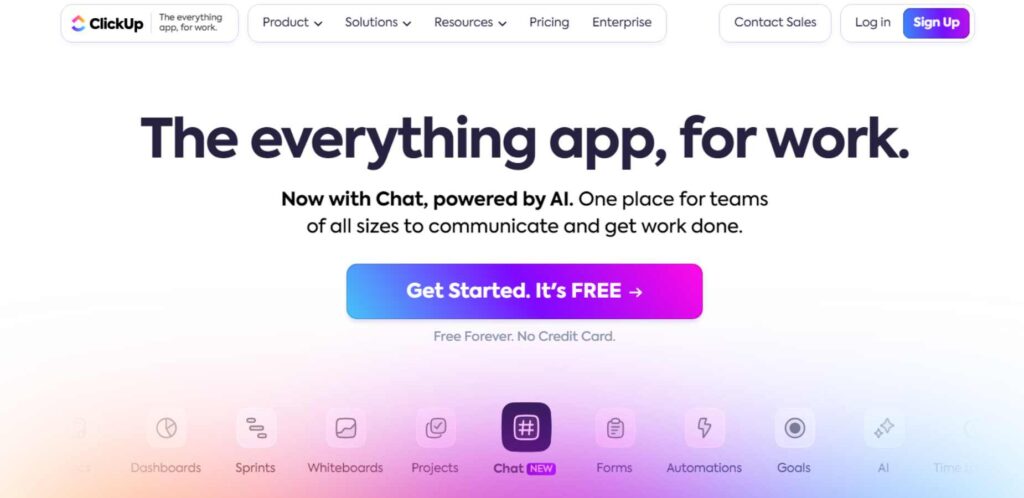
ClickUp is the all-in-one productivity and project management platform, which has put together all the basic features: task management, docs, chat, and goals, all in one single product. ClickUp has a user interface that is highly customizable, supported by features which stretch to fit virtually every workflow a team may need. What makes ClickUp so attractive is the option to replicate the functionality of numerous other productivity tools, which, in effect, reduces the need for having separate subscriptions.
Various views- List, board, calendar, and Gantt charts, as it goes with different project management styles. It brings together the robust capabilities to automate along with integration options so as to smooth workflow processes and enhance team coordination across departments.
Key Features:
- Custom Views: List, Board, Calendar, Gantt
- Task Dependencies and Relationships
- Time Tracking and Reporting
- Document Collaboration
- Custom Fields and Forms
- Workflow Automation
- Multiple Assignees
Best For:
- Small to large teams looking for an all-in-one project management solution
Pricing:
| Free Plan | – |
| Unlimited | $7/user/month |
| Business | $12/user/month |
| Enterprise | Custom Pricing |
Website:
www.clickup.com
2. Wrike
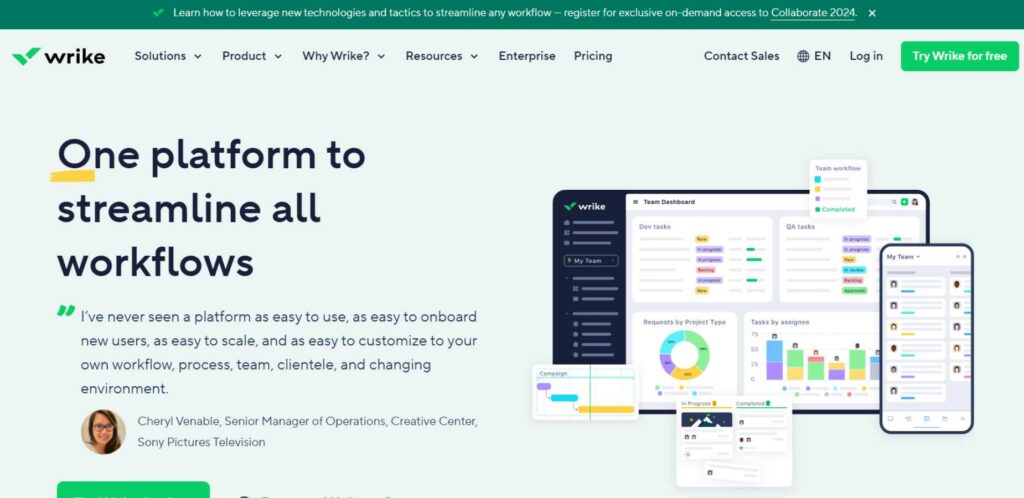
Wrike is an enterprise-grade project management solution that is suited and excellent in regards to the work management capabilities for large organizations. Enhanced reporting and analytics capabilities will give very fine visibility into project progression. There’s an apparently unique avenue through projects, tasks, and subtasks in an effective three-pane interface.
Wrike makes it easy to handle complex workflows and cross-functional collaboration among teams. Enterprise systems help creative teams with seamless integration with proofing tools, which are built in. It keeps security in place while efficiently allowing project execution through customizable workflows and detailed permission settings.
Key Features:
- Custom Workflows and Status
- Resource Management
- Activity Stream in Real time
- Advanced Reporting
- Proofing and Approval
- Cross-tagging System
- AI Work Intelligence
Best For:
- Mid to large enterprises requiring robust project management capabilities
Pricing:
| Free | Up to 5 user |
| Professional | $9.80 user/month |
| Business | $24.80 user/month |
| Enterprise | Custom |
Website:
www.wrike.com
3. Asana

The best thing about Asana is that it has a clean, intuitive interface and powerful task management capabilities. The system is so excellent in making complex project management accessible by its user-friendly design and a logical workflow organization. Its Timeline feature gives you a visual overview of how the projects can be managed and scheduled in terms of deadlines and dependencies.
The software offers wide-ranging integration possibilities with other business tools one might use, hence it is pretty versatile to be used by teams of any size. Its capacity for both simple task lists and complex portfolios with robust collaboration functionalities made it a perfect fit for teams seeking elasticity in their approach to project management.
Key Features
- Timeline and Calendar Views
- Custom Fields and Templates
- Task Dependencies
- Workload Management
- Forms and Proofing
- Goals Tracking
- Portfolio Management
Best for:
- Teams of all sizes looking for an intuitive project management solution.
Pricing:
| Basic | Free |
| Premium | $10.99/user/month |
| Business | $24.99/user/month |
| Enterprise | Custom Pricing |
Website:
www.asana.com
4. Monday.com
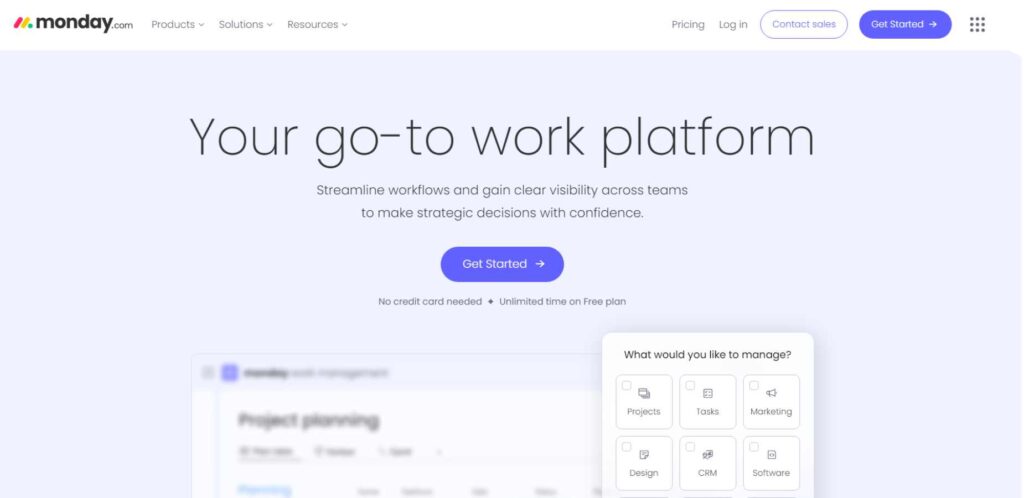
Monday.com is a highly visual work operating system that redefines how teams collaborate through intuitive workflows and automation. The colorful board-based interface makes it easy to understand project status at a glance. Its innovative approach to workflow visualization has made it possible for teams to create customized views and automations without requiring any technical expertise.
This is essentially what enables Monday.com to fit into just about any use case-from project management to CRM and HR processes. The core strength of this platform is when it can really facilitate transparent work processes with high simplicity in usage. With a huge template library and changeable templates, teams can easily set up workflows that suit their unique requirements.
Key Features:
- Customizable Templates
- Multiple Board Views
- Automation Recipes
- Time Tracking
- Formula Column
- Integrations Hub
- Dashboards and Reports
Best For:
- Teams that require very graphical as well as customizable workflow management tool
Pricing:
| Individual | Free |
| Basic | $8/user/month |
| Standard | $10/user/month |
| Pro | $16/user/month |
| Enterprise | Custom Pricing |
Website:
www.monday.com
5. Smartsheet
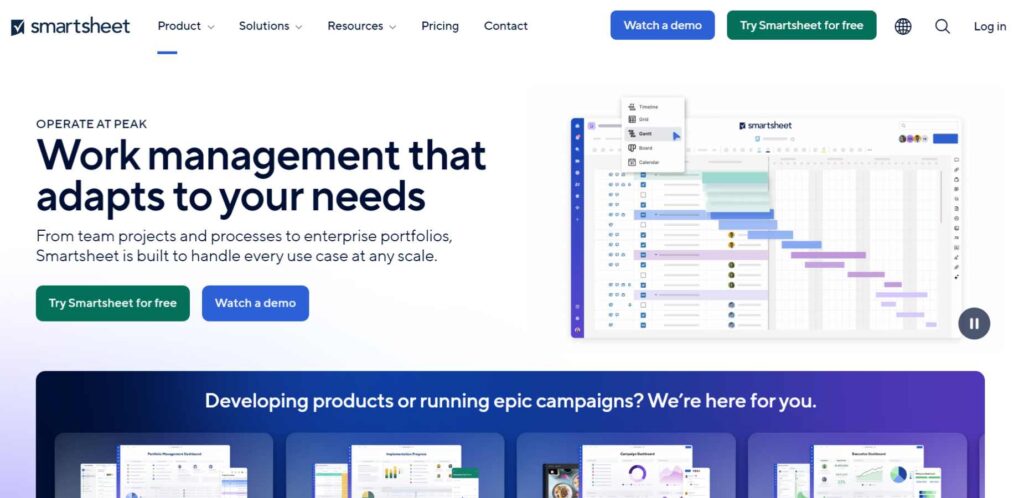
It unites spreadsheet familiarity with strong project management and automation capabilities. It is strong in complicated project portfolios and resource management over large organizations, uses a spreadsheet-like interface which will feel familiar to the user used to Excel, offering advanced capabilities like conditional formatting, automated workflows, and robust reporting tools.
Therefore, it is used by companies with tough data protection requirements. At its very best, this platform can handle massive projects and programs, with vast integrations, such that it is well suited to enterprise-level project management.
Key Features:
- Grid, Gantt, Card, Calendar Views
- Resource Management
- Automated Workflows
- Critical Path Analysis
- Cell Linking
- Enterprise-grade Security
- Advanced Reporting
Best For:
- Enterprises which require spreadsheet-like functionality
Pricing:
| Pro | $7/user/month |
| Business | $25/user/month |
| Enterprise | Custom pricing |
| Premier | Custom pricing |
Website:
www.smartsheet.com
6. Kissflow
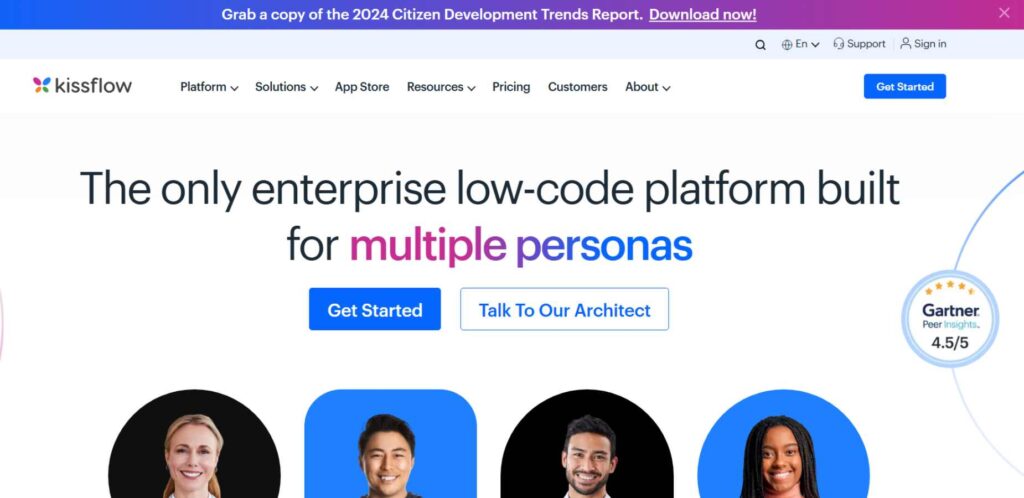
It is an all-in-one digital workspace that incorporates project management, process automation, and collaboration in one. Its most salient strength is the no-code workflow automation approach, which makes it accessible to everybody without any technical acumen at all. Its case management capabilities stand uniquely ahead in handling structured and unstructured work well.
Digitizing and automating the even most complicated processes of businesses, Kissflow does not lose track of its simplicity in user experience. It offers enough adaptability to customize forms, workflows, and reports on different customized solutions according to organizational requirements.
Key Features:
- Visual Process Builder
- Case Management
- Custom Forms
- Analytics Dashboard
- Role-based Access Control
- Mobile App
- Process Analytics
Best For:
- Organizations that are seeking all-around workflow automation
Pricing:
| Small Business | $10/user/month |
| Corporate | $20/user/month |
| Enterprise | Custom Pricing |
- Small Business: $10/user/month
- Corporate: $20/user/month
- Enterprise: Custom pricing
Website
www.kissflow.com
7. Hive
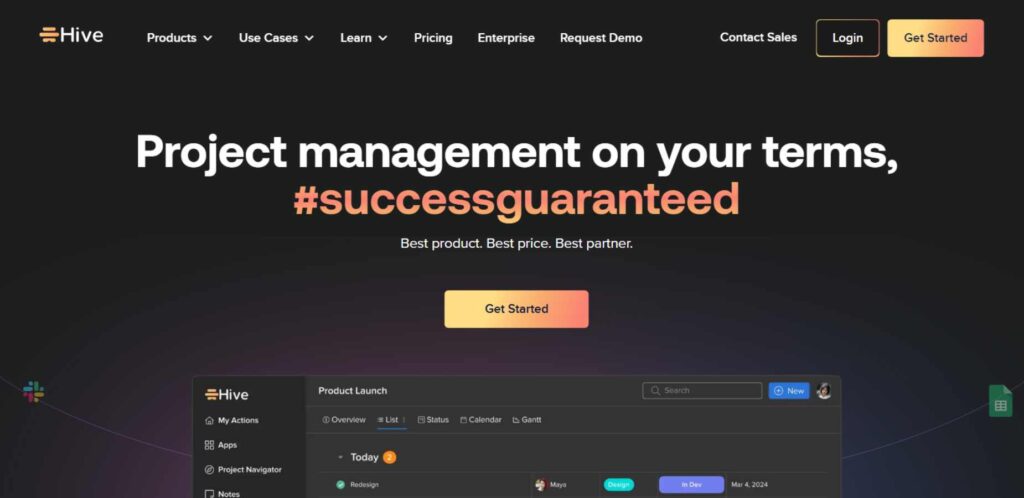
Hive is an AI-driven project management tool that helps give a team the much-needed productivity boost through intelligent automation and flexible project views. The direct interrelation of email and chat makes for a centralized work environment that accommodates all the communications and tasks of your team.
This particularly suits teams that handle various projects at the same time with robust features in terms of time tracking and resource management. Hive would provide extremely deep analytics into team productivity as well as the progress of each project. Application that automates recurring tasks and proposes suggestions proactively in order to help teams work better.
Key Features:
- AI-driven Workflows
- Native Email Integration
- Resource Management
- Time Tracking
- Proofing and Approval Analytics
- Multiple Project Views
Best For:
- Teams looking for an AI-assisted project management
Pricing:
| Solo | Free |
| Teams | $12/user/month |
| Enterprise | Custom Pricing |
Website:
www.hive.com
8. Pipefy

The strength of Pipefy lies at its core competency of developing and managing structured workflows with its pipe architecture. It is highly flexible in terms of designing workflows based on customization requirements while maintaining standardization for all the processes. Its low-code approach is an added advantage where teams can automate complex business processes with not too much technical knowledge.
This tool enables organizations to generate a central repository of information and also have cross-references cutting across different processes. As the core is the process optimization and automation via Pipefy, this will entail unprecedented value for the operations and the teams involved in service delivery.
Key Features:
- Custom Pipes
- Workflow Automation
- Database Management
- SLA Management
- Custom Forms
- Workflow Templates
- Advanced Data Analytics
Best for:
- Process-oriented teams and operations departments
Pricing:
| Free | – |
| Business | $24/user/month |
| Enterprise | Custom Pricing |
- Free: free features
- Business: $24/user/month
- Enterprise: Custom pricing
Website:
www.pipefy.com
9. Jira
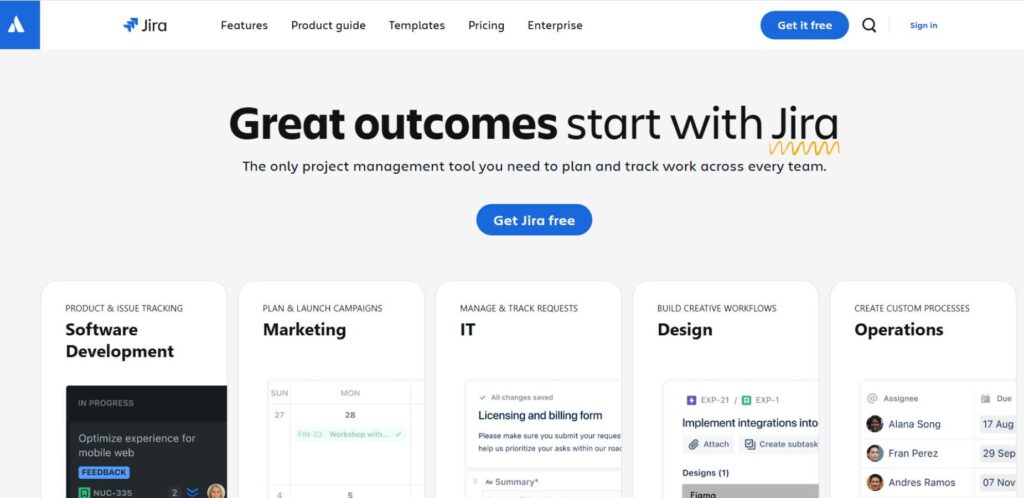
Jira is a robust project management tool mainly developed for software development teams but can be used for other kinds of project management requirements as well. This platform supports agile project management with wide-ranging Scrum and Kanban practice support. Its robust capabilities related to issue tracking make it suitable for managing multiple projects that hold numerous dependencies and requirements.
Such intricately customized teams will find the workflows that just fit their exact development process. Apart from its other products, third-party applications can be incorporated to deliver the whole ecosystem of development on the platform. Reporting and roadmaps in Jira help customers make better sense out of project development and team velocity.
Key Features:
- Agile Boards
- Advanced Roadmaps
- Issue Tracking
- Custom Workflows
- Time Tracking
- Exhaustive APIs
- Deep Reporting
Best For:
- Software development teams and agile project management
Pricing:
| Free | up to 10 users |
| Standard | $7.50/user/month |
| Premium | $14.50/user/month |
| Enterprise | Custom Pricing |
Website:
www.atlassian.com/software/jira
10. Miro
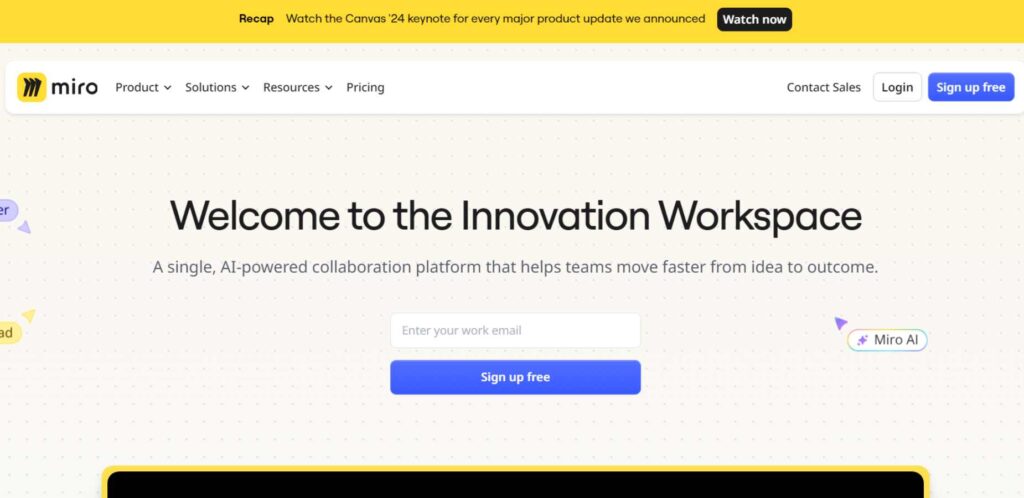
Miro is an online collaborative whiteboard platform that changes the way teams visualize workflows and brainstorm ideas. The platform features unlimited canvas space to create visual workflows, mind maps, and process diagrams. Its real-time collaboration makes it easy for teams to work across borders. Miro features an all-inclusive template library, which supports various use cases, including agile ceremonies and business process mapping.
The platform provides integration, enabling teams to connect visual workflows with other tools of project management. Miro allows organizations to visually communicate complex processes and ideas across teams through its presentation mode and sharing options.
Key Features:
- Infinite Canvas
- Real-time Collaboration
- Template Library
- Video Chat Integration
- Smart Diagramming
- Version History
- Presentation Tools
Best For:
- Teams who need to visually collaborate on workflow and map processes
Pricing:
| Free | Basic |
| Team | $8/user/month |
| Business | $16/user/month |
| Enterprise | Custom Pricing |
Website:
www.miro.com
11. Basecamp
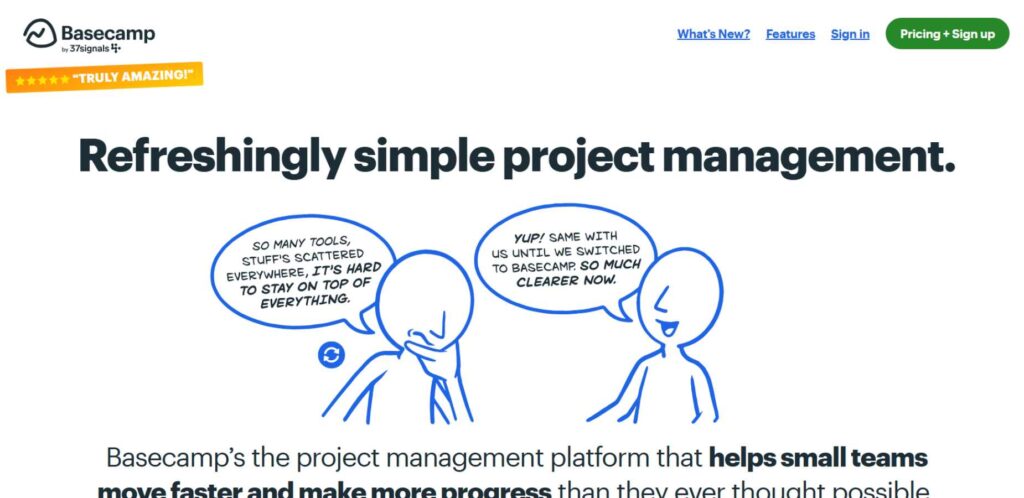
Basecamp is an all-in-one collaborative project management tool that is no-frills and all-inclusive. It separates work into specific, independent projects, preloaded with everything you need to collaborate, such as message boards, to-do lists, schedules, and file storage. However, it’s the special pricing model that sets Basecamp apart-from limitless users and projects for one flat rate, making it especially attractive to scaling businesses.
It makes use of asynchronous communication that saves time from not going into unnecessary meetings overhead processes. Basecamp’s Hill Charts have been quite good for the representation of project status with an insight to the extent of momentum carried by it.
Key Features
- Message Boards
- To-do Lists
- File Storage
- Schedule Management
- Hill Charts
- Automatic Check-ins
- Client Access
Best For:
- Teams that simplify communication and project management.
Pricing:
| Personal Project | Free |
| Business | $99 flat rate per month (unlimited users) |
Website:
www.basecamp.com
12. Trello
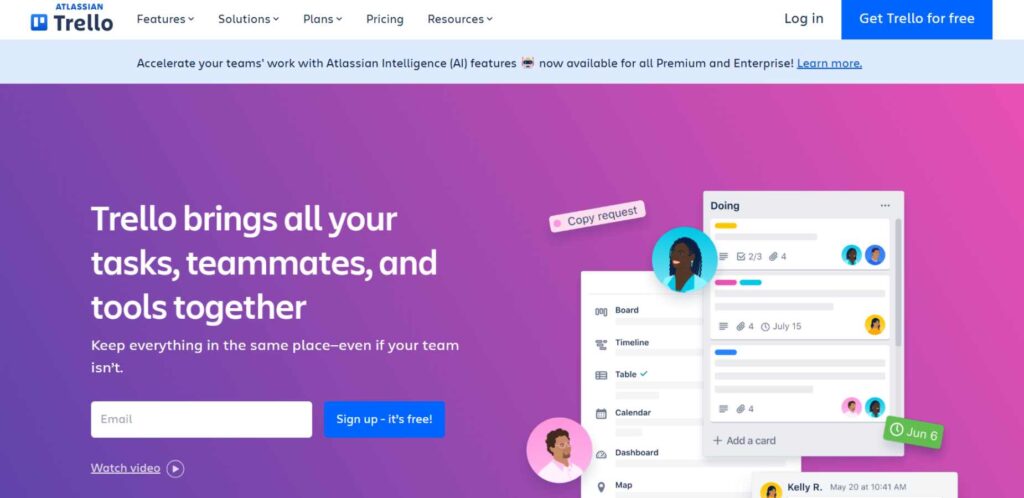
Trello is extremely visual, a Kanban-style project management tool that stands out at being ridiculously simple and flexible. The intuitive board and card system it offers brings it easy to keep track of what your team has been up to. Each card can be loaded with detailed information, attachments, checklists, and automation rules through its Butler feature. The Power-Ups system in Trello lets teams extend their functionality through additional features and integrations that enable tailoring the platform to meet their needs.
A timeline and dashboard views have recently been added to the platform, making it more than just traditional Kanban boards. Its mobile-first design and real-time synchronization ensure that teams remain productive from anywhere in the world.
Key Features:
- Kanban Boards
- Butler Automation
- Power-Ups
- Card Templates
- Timeline View
- Dashboard View
- Custom Fields
Best For:
- Visual task management and simple workflow organization of teams.
Pricing:
| Free | Basic Features |
| Standard | $5/user/month |
| Premium | $10/user/month |
| Enterprise | $17.50/user/month |
Website:
www.trello.com
13. Zapier
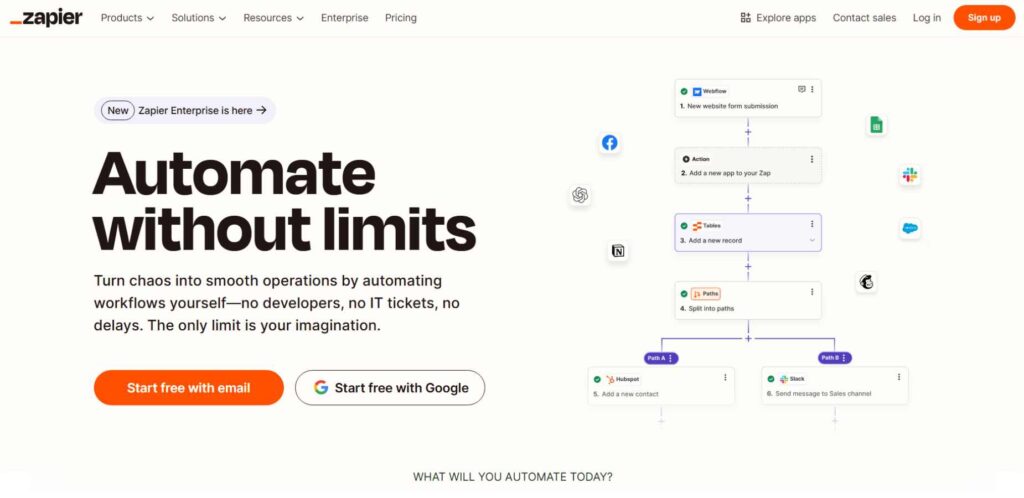
Zapier is an application that automates workflows so the various apps and services can interact with one another, no coding required. Over 5,000 Apps Integration can automate repetitive tasks across your full software stack. Its visual workflow builder makes the creation of complex automation sequences, called Zaps, easy to handle multiple steps and conditions. It transforms and filters data between applications creating complex workflow automations.
The platform also includes error handling and monitoring capabilities so that automated flows run reliably. Comprehensive testing capabilities combined with a version history allow teams to feel confident while building and maintaining their automation workflows.
Key Features
- Multi-step Zaps
- Conditional Logic
- Error Handling
- Filters and Formatters
- Schedule Automation
- Version History
- Premium Apps
Best For:
- Teams who want to automate workflows that involve multiple applications
Pricing
| Free | The basic feature |
| Starter | $19.99/month |
| Professional | $49/month |
| Team | $299/month |
| Company | $599/month |
Website:
www.zapier.com
14. Nintex
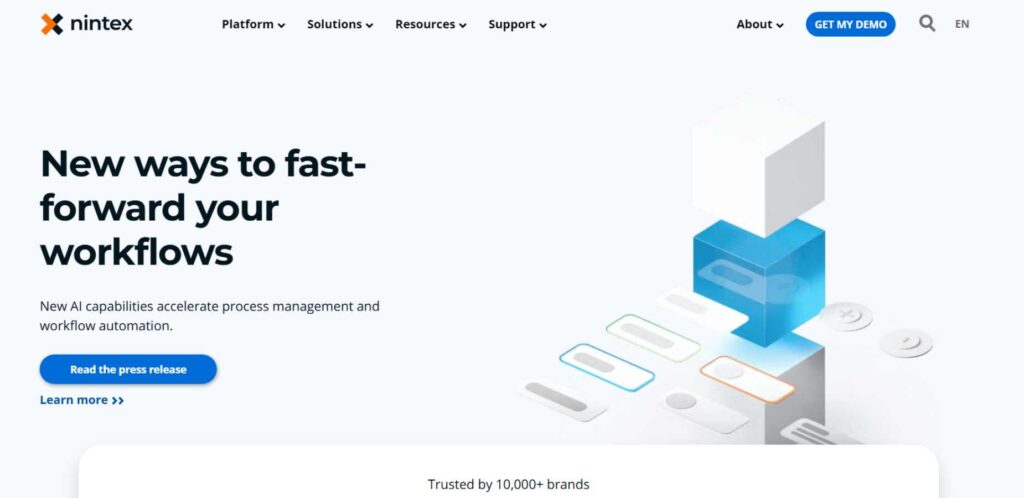
Nintex is the most powerful enterprise grade process automation platform with some of the most powerful workflow automations and RPA capabilities. It offers a large set of tools for process mapping, workflow automation, and document generation, which is perfect for complicated business processes. It offers drag-and-drop functionality to develop complex workflows without coding and deep customization for developers.
Nintex’s process analytics allow for a very high level of functionality that helps understand the performance and bottlenecks of the workflow. The fact that Nintex integrates with such critical enterprise systems, including SharePoint and Office 365, makes the platform itself very important to organizations that are well invested in Microsoft technologies.
Key Features:
- Process Mapping
- Workflow Automation
- Document Generation
- RPA Capabilities
- Process Analytics
- Mobile Apps
- Electronic Signatures
Best For:
- Enterprise organizations needing detailed process automation
Pricing:
- Based on custom pricing
Website:
www.nintex.com
15. Kintone
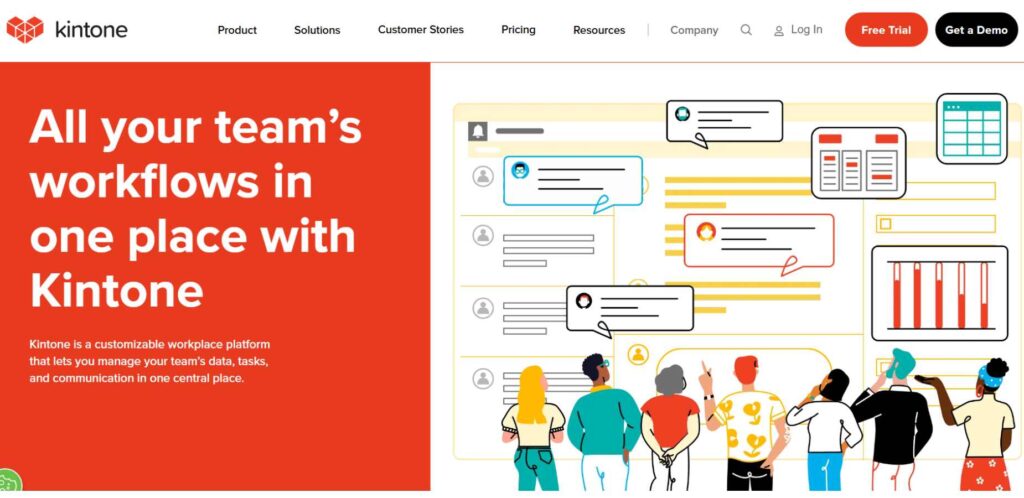
Kintone is a firm that enables teams to develop business applications without coding. In this service, businesses can create custom workflows and databases to match any aspect of their business model. The Kintone application builder offers the user a simple process in which a complex business application can be created with complicated workflows and permissions.
It is, in fact, the ability of Kintone to combine database functionality and process management that makes it able to let teams monitor data and workflows in one place. This website has a huge collection of options for customization through the use of CSS/JavaScript for advanced users.
Key Features:
- No-code App Builder
- Custom Databases
- Process Management
- Role-based Access
- Mobile Access
- API Integration
- Real-time Updates
Best For:
- Organization when needing custom applications and workflows.
Pricing
| Professional | $24/second member/month |
Website
www.kintone.com
How Do You Choose the Best Workflow Management Software?
1. Look at Your Business Needs
No two businesses are alike. Begin by determining what you expect from the software. Are you automating simple tasks, project tracking, or maybe even more complex workflows using AI? Ensure the software can actually handle the complexity of your processes and scales accordingly to your business.
2. Ease of Use and User Interface
The WMS must be easy to use. A cluttered or awkward interface will create resentment among employees and destroy total productivity. Select an application that is clear and plain and ensure you provide education and support materials.
3. Customization and Flexibility
The best software will allow you to ease workflows toward what fits your specific processes. Be it the task assignments, approval workflows, or integration with other tools, flexibility is the key. Look for those which make it easier for you to modify workflows without requiring much technical know-how.
4. Integration with existing Tools
Third, WMS should be easy to adapt to other tools you are using-for example, project management systems, email, or CRM software. Integrating all your tools will result in a cohesive workflow. This means that you must select software that can connect to your existing tech stack without disrupting your current workflow.
Conclusion
It can also enable the right workflow management software to enhance work outcome, cut down on errors, and increase effectiveness in a workflow. Based on what your business needs, ease of use, modification flexibility, integration, and security, you can make an informed choice that would suit your organization in the long run.
FAQs
1. What is workflow management software?
It is a tool applied by companies to automatize and perfect processes, assign tasks, and improve working relations with other team members.
2. Why is workflow management important?
This leads to efficiency in the operations, few errors in human results, and perfected operations.
3. Is Workflow handling systems pricey?
There are different software charging, but most sites offer flexible plans for their clients with free trials.
4. Does workflow software integrate other tools?
Most workflow management software is nowadays integrated into the most common tools such as CRM systems, e-mail, and project management platforms.
